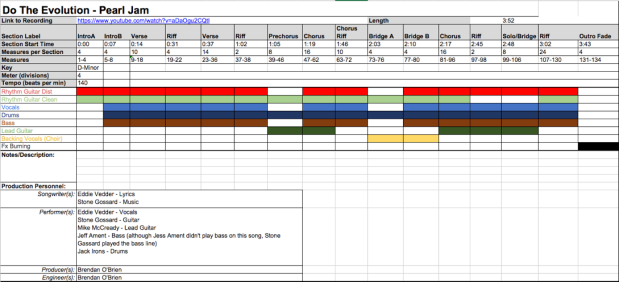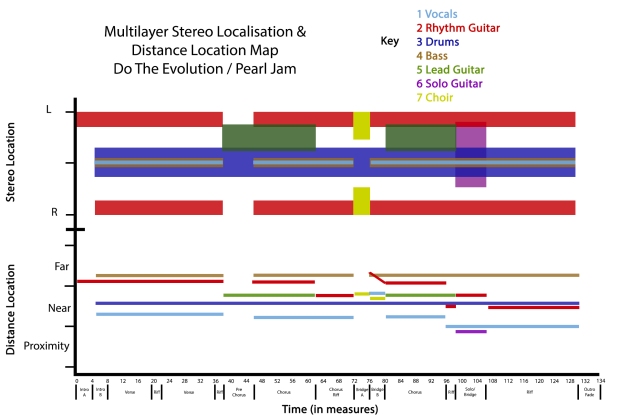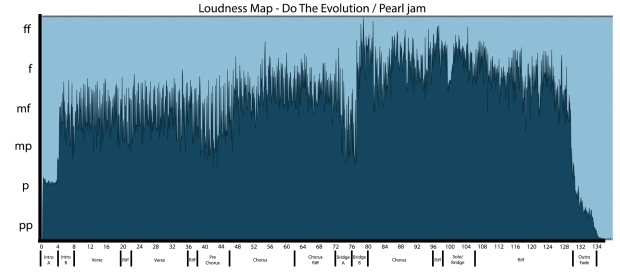Construction has begun and figuring out where my focus is.
Throughout the last trimester I have been exploring more theoretical aspects of the sculpture I am creating and thinking more about the ‘purpose’, the why of the physical art and what it can help achieve. The focus was initially based on my own meditative and creative output, exploring the engineering fabrication aspects and design aspects for my own personal education and exploration. Having a creative outlet that was separate from my music and production work to help me relax more. Music hasn’t become a chore, I love it, but my whole life is consumed by musical projects. I think I do a lot of the video, photography and media management work not only to further the music we create, but also to fulfill my desire to explore more art forms.
The construction of sculptures has been exciting, learning how to weld and being able to create what it in my mind without the restraint of not knowing how to physically make it work and put it into action. Through this ‘sculpting career’ move, I have also become more aware of the effect of public art on people and how what I create can affect and inspire the people around me. I saw this in reflection on the ‘Migaloo’s Song’ sculpture last year. I went into it for myself, wanting to build this thing I had an idea for, but I came out at the end with a sea of people I affected with the design and construction of the large-scale machine. The wonderment of the actual object functioning was one thing, but the inspiration that anyone could just buy a welder and make this thing created sense of joy in so many of my friends. Everyone wanted to be a part of it and I had lots of friends wanting to come help make it and the song. A side result apart from the awards and self-fulfillment was the direct inspiration for 4 friends who directly told me that me undertaking the sculpture and achieving it (as well as sharing it online in videos and posts) helped them to overcome the fear of starting a new art form or dream they had always avoided because of insecurity. It also directly affected 2 young Gold Coast school students whom I sponsored with some of the prize money to build their own sculptures for this year’s festival. I didn’t see this effect at the start of the project in Jan 2017, but it’s becoming clearer to me this year. What I could measure though was the effect it also had on the public that saw the sculpture, I wasn’t aware and/or wasn’t concerned with that. Mostly due to the fact that I didn’t even know if I could do it and if I’d be happy with the final result, adding the pressure of making others happy with the result or affecting change would have made it too stressful for me. This year is different though, I have a lot more confidence in the process and now that I have a good model for how the whole situation of designing, building and showcasing public art works, I am keen to create a more defined outcome for the public viewing the piece in addition to my own satisfaction.
So, I want to explore the effect of the audiences sensory and emotional reaction to the sculpture and in turn how public art can help encourage or change or affect the public’s perception on a particular topic. It might not even be a direct actionable response as I had initially suggested a month ago, but may be a change or mindset or a trigger or catalyst for their thinking and this is where I think public art has a purpose.
As I start to propose a question for my final exegesis, I would like to fulfill the following things.
- Creating a question that I personally don’t know the answer for to ensure I am engaged fully in exploring the topic.
- Creating an sensory impact in the audience, whether it is emotional, actionable or philosophical, through the visual and sound of the piece.
- Creating a path for myself to continue exploring and pushing myself in both design and fabrication of the sculpture.
- Creating a philosophy for my own sculpting career, a 2nd purpose for what I am trying to achieve besides building an awesome thing that interests me.
I will come back to the question, but to start getting the ideas out at this stage perhaps something like,
How can public art create and inspire emotional and change in thinking and philosophical issues?
To help explore the topics above throughout the process of this masters and the sculpture, I am creating an action plan to map out the phases and timeline of both the sculpture design and construction and also the milestones to reflect on the affective qualities and goals of the final piece in relation to an audience. While the Swell Sculpture Festival on the Gold Coast in Sept 2018 creates a deadline and an initial public display and audience, it is not the sole destination, but instead I think that it is an example of public art display.
Action Plan
Here’s how I have practiced in the past (detailed review of how I did Migaloo)
VS
How I am going to go about making this one, what is different. Looking at my practice as if it is brand new.
To do this I need to become more critically aware of decisions on my way and make sure that I document them as much as the actual construction process. I need to be able to look back at where I’ve come through my own research so far with regards to sound sculpture. Some of the cycles reflection will be practical construction, some will be on the research and what I have learned.
What is measurable action research?
- Find way to measure and get data.
- Do something, reflect, examine, reflect and re adjust.
- Look deeper into this with a case study on the methodology.
Here’s how I have practiced on the Migaloo’s Song sculpture.
For my initial sculpture last year, I was much more concerned with the actual construction process and simply achieving it for myself. Part of this selfish focus was to remove any excess stress from the project as I didn’t need to do it all in the first place and I was going through chemo at the time. There was probably part of it where I recognized if I put the focus on self development and fulfillment than I could avoid insecurity and fear of judgement from others in the art and sculpture scene as it was a new art form to me and this fear is usually what stops most creative people from undertaking new works.
The sculpture last year started with a 2 month long design process in Dec 2016-Jan 2017, the whale started out as a geometric pattern of strings and plucking parts to a wave made of strings, then a hammerhead shark with strings long ways and ended up being a humpback whale. All three (and the other side tangent designs) were related to sound and music, it was clear to me from the early stage that I was interested in creating sculptures that combined sound, acoustics and music, though it was another 16 months until I discovered the term ‘Sound Sculpture’. I had also just finished an Physics degree in Astrobiology that saw me fixated on the connection of frequency and vibrational wave theory in the development of life in our universe.
Throughout the ‘Migaloo’s Song’ design and construction I was aware and making decisions on the piece based not only on my own interest, but on how it would look and sound to an audience. I think 20 yrs in the music industry has taught me that there is nothing wrong with making music or art that is self-satisfying, but considering how the audience will react or take in the art is also an important skill to have. I think this is where the sculpture moved from being simply a geometric combination of parts to another living creature that would encourage people to ponder the connection between nature and us as humans though music and sound. The following was my artist statement for ‘Migaloo’s Song’ from Jan 2017 before I had begun construction.
Sound and music follows a harmonic structure like that found in nature. There’s connection to our organic world utilizing acoustics & science, to create harmony with our surroundings. Sound is an auditory perception of the brains response to vibrational patterns observed by our bodies. The combination of art, design and psychoacoustics creates a hidden link that resonates between nature and all life. Humpback whales are described as ‘inveterate composers’ of songs that are ‘strikingly similar’ to human musical traditions, a kinship we share with these mammals and a shared language. – Guy Cooper / Migaloo’s Song
For that sculpture I think there was a decent amount of thought that went into the design and construct of creating some response in the audience, a purpose and connection for the sculpture at the start of the design process. But as the actual construction begun, I focused soley on the fabrication and it wasn’t until it was finished (3 days before swell haha) that I came full circle and started to revisit the extra elements of actionable response in the audience. This was achieved in a small way with the press releases and the song I wrote using the harp and a collection of local artists supporting me on the track.
Press Release Sept 2017 – https://www.dropbox.com/s/um0tc3oxxjtpq59/Guy%20Cooper%20-%20Migaloo%27s%20Song%20Media%20Release.pdf?dl=0
https://open.spotify.com/embed/track/7f862NkJeucPguLSLYj2yF
There was a lot of reflective moments in regards to the construction, visual appearance and sound of the harp. Every 4-7 days when I had created a new aspect or failed to construct what I had in my mind, I sat down and reflected on the sculpture. Sometimes it was a forced moment of reflection as my body wasn’t physically able to move or stand up, somedays spent in chemo my mind was redesigning the construction, welding, joints and parts perhaps as a way of distraction from the depressing scenes and news in the hospitals. These moments of reflection and meditation were private and personal, in my head only, I didn’t document them or talk about them with others. It was enjoyable for me to not have to discuss them with others, part of the project was something I could just do myself without having to check and manage multiple other opinions, suggestions and needs. The downside of this is that I have developed a better method of working through the creation process to achieve an outcome, but I don’t have any way of easily explaining this process to others. This did occur to me in 2017 through the process, but I honestly didn’t care as it was just for me, at the time I needed to focus on myself to get through everything that was happening.
So this year I will be using this masters course to improve on the process and outcome and also to find a better way to document and explain the process to others and myself.
What Have I done so far and what needs to happen?
Design
I have already begun the design and construction process for ‘Poseidon’s Music Box’. The design started with a combination of research into sound sculpture and geometric design, sound and nature based physics. I had initially wanted to created a sculpture of dying bleached coral using organ pipes, a droning graveyard that re-enforced the environmental issue of coal mining and its direct connection to climate change and the death of the Great Barrier Reef. I would consider myself an environmentalist, there are so many issues with the world, capitalism, greed, violence, poverty, evil motives… lets not get into those, I want to focus on something that I can change. While I work with helping the homeless on the Gold Coast, building a $5,000 whale harp from steel is not the most helpful thing for the homeless.
The design for ‘Poseidon’s Music Box’ begun on Pinterest collecting pictures from the internet and also my own photography with visual design elements that embodied the theme of coral, music, sound, mining and climate change. The concept of having coral out of its ocean environment and on the land, took me towards the succulent plant life which I have always thought looks like land coral. I have a large garden where I spend my time relaxing and meditating and the I have always been fascinated by the geometric patterns in plants and particularly succulent plants. I decided I wanted to create a large scale coral piece that mirrored the underwater coral, but was manmade, this would help explain the concept that our natural coral is dying and one day all we may have is manmade coral to remember what the coral used to look like. The concept also brought the coral issue to the people on the land, not everyone gets the opportunity to go to the reef and dive or snorkel to see the beauty and in turn effect of coral bleaching and death from climate change. I think this is the same concept as ‘Migaloo’s Song’, bringing the 1:1 size and majesty of the humpback whale to the land, so standing next to them you can see and feel the awe of the scale.
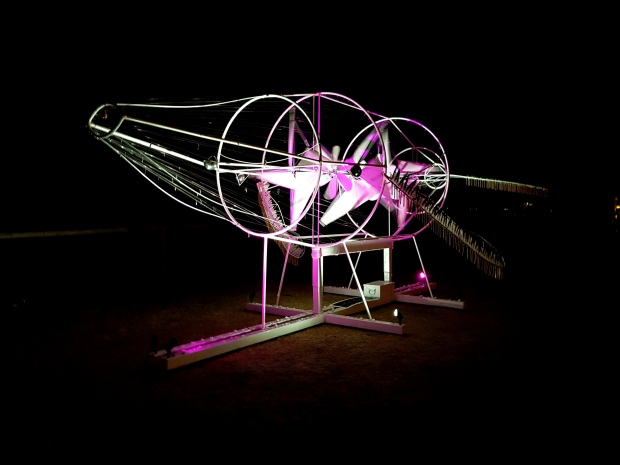
I also wanted to include some music, not just sounds, but a music piece into the sculpture. The more I research this I find it is less ‘Sound Sculpture’ and more satisfying my interest in marvelous machines. From music boxes to Da-Vinci, perpetual ball bearing machines and orchestrion’s.
A more recent example would be something like the Wintergatan, which is amazing, but has no context to me, its just a big ass amazing machine that sort of makes music.
With all this in mind, I spent 2 months again drawing and collecting large scale and macro images and building different designs in my head. I decided early on I wanted to use chime or steel tubes to generate the musical elements instead of strings this time in order to create something more permeant and all weather. The designs ended up closer to the final concept of Poseidon’s Music Box below.
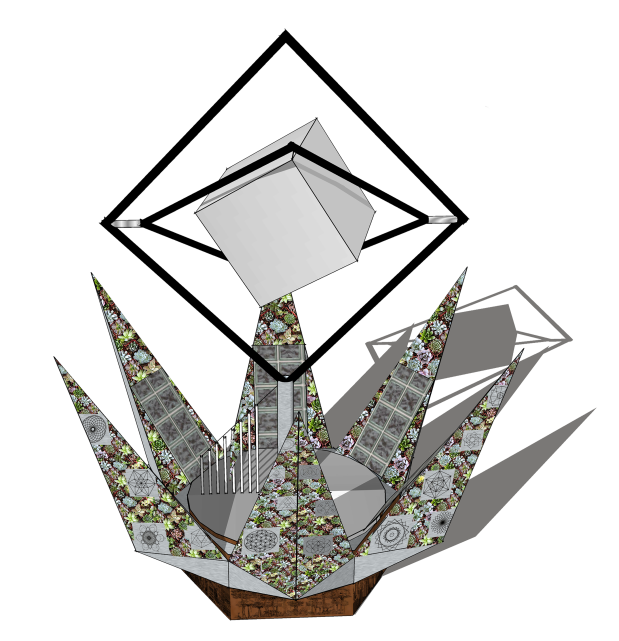 More design and reflection needs to happen as the project continues. Practical concerns arise as the construction begins that require the concept design to be altered along the way. I want to try and document this as much as possible. There also needs to be a reflection on the design at each stage for simple aesthetic purposes and as my understanding of what I want to achieve with the final piece become more clear.
More design and reflection needs to happen as the project continues. Practical concerns arise as the construction begins that require the concept design to be altered along the way. I want to try and document this as much as possible. There also needs to be a reflection on the design at each stage for simple aesthetic purposes and as my understanding of what I want to achieve with the final piece become more clear.
Construction
The construction process is fun and unknown, perhaps it is the unknown factor that makes it fun for me. Part of the desire to create sculptures is that I don’t know how to physically do it and I enjoy a challenge. I do a lot of things in my life, I have too many jobs, but I have always enjoyed doing different things, I sleep less than most people and life is too short to sit around and not get off your ass and do what makes you happy. My time with thousands of musicians, artists, 17 years of lecturing and teaching artists, has taught me that most people never overcome the fear of judgment from being creative. Its sad and depressing to see people trapped in their own minds from fears and insecurities. I have always made it my goal to change this people, I do it for my friends and my students. I have found my purpose in a lot of ways is a catalyst. Either through my words or my actions, it’s what my label does and I can see that effect I have on people in every one of my jobs.
The construction for me is a mountain to climb, it started with sculpture in 2017 where I wanted to learn how to work with metal. Wood was easy and I have built more than enough things (studios, decks, furniture) from wood, but metal was always a disaster for me. I wanted to learn how to weld and overcome the barrier to construct bigger things from steel. I have always been fascinated by steel sculptures that mimicked natural animals and life and wanted to learn to weld steel. It was probably my retirement plan to help me transition from running my businesses into stopping work and relaxing, but when it looked life I wasn’t maybe going to make it that far with the cancer and T1 diabetes, I got up and went and bought a welder. Terrible things and bad times have always snapped me into action, you can sit there and let it drag you into depression, or you can snap yourself out of it and take control of your life.
So the process of learning to weld was watching some YouTube videos and making mistakes. It’s more enjoyable for me to learn through the process and ‘Migaloo’s Song’ has all my first welds. I probably should of started with something smaller, but hey, where’s the fun in that!
For Poseidon’s Music Box, I can easily see the improvement in welding, planning and machinery. I have suppliers for steel, baring’s, gears, motors, solar and renewable energy and I have a much better understanding of the engineering requirements and the bending moments and sheer forces of steel and aluminum. I have had some fabrication advice this year from other sculptors I met through the process last year and also tradies at the supply shops. My welds are cleaner, stronger and the process is much quicker now, I’m also not physically disabled this year being off chemo and have my strength back.
I think the design and construction are combined, you can’t just design whatever you want, physical and logistical restraints need to be considered along with the design aesthetics. For me the construction is simply looking at the physical building and engineering process, but I think I will combine the design research and outcome aesthetics into the construction discussion for the months to come.
Reflection on process and research.
What do I want to know next?
Through this masters course, my direction on what I want to explore has changed and I expect it will continue to do, but each time I’m getting closer to a more defined goal. I feel like I’m spiraling, but spiraling inwards towards a central point that has clarity on what I think and feel. A month or two ago I was focused on sound sculpture and then on art activism, both of which describe what I do and what I want, but as I look at focusing my attention to a more measureable goal and exegesis question, I find that both of those aspects can be discussed with more final intent by applying what I do to the topic of how public art can affect people’s emotions and thinking.
I don’t want to go into this too much right now, I think this is going to be my main topic for the weeks to come and I want to dive into the case study on the action research cycles first so that when I explore the topic more deeply I’m coming at it with more framework for the aspects I need to focus on.
Public art (for the weeks to come)
- Look at my own ethics and morals.
- Seeing the relationship between my own morals, and my practice and how I present myself.
- How can public art affect emotions and thinking in the audience?
- How can I enact actionable changes with public art installations?
- How can I focus my public art on a local issue? (Coal mining & Adani?)
- How much impact does Kinetic Sound Sculpture have over static silent sculpture?
Basic Action Plan
Jan 2018
- Research
- Masters based research from 2017 into ‘Sound Sculpture’, affect and aesthetics, personal sculpting career aspects, public art.
- Design & Construction
- What do I want to design? Reflecting on how my design can inspire others, how can I affect change
- What can I physically build and how am I going to draw a concept of this thing in my head?
- Learning how to draw better, taking design cues from nature and science.
Feb
- Research
- What is Sound Sculpture?
- Design & Construction
- How will the sculpture work mechanically, specifics on the gears, bearings, loading values, sheer forces and bending moments, statics, math and physics.
- How will the musical element be scored and played?
- Where can I source all the materials?
- How can I build it so I don’t need to hire a crane and truck again?
March
- Research
- Art activism and how I can enact change with my art
- Design & Construction
- Get stuck into the construction, start at the centre and work my way outwards on the sculpture slowly, reassess at each stage and alter design to suit the visual and practical issues.
April
- Research
- Public art and how I can enact change in the audience.
- How do I measure and document the process?
- What do I need to be doing for my exegesis?
- Design & Construction
- Finish basic elements and reassess how the aesthetics of the whole structure are working, what needs to be changed to achieve the effects I want.
May
(I will be on tour in japan for most of May with two different bands, so I will use this month as more research and reflection)
- Research
- How can I enact the change I want with my sculpture?
- What other aspects and methods can I employ to re-enforce the concepts? (recording of the musical piece and produce a song again?)
- How effective have others been in their public art with effecting change in people?
- Design & Construction
- Take lots of pics of sculpture to date so I can reflect while in Japan.
June
- Research
- How do I feel about the effect of the sculpture?
- How do other people see the effect of the sculpture?
- Design & Construction
- Using the visuals and concept so far, compose the musical score that re-enforces the topic and end goal.
- Embed solar panels, motor, battery and lighting into the structure.
- Finish main structure.
July
- Research
- Is my sculpture fitting into the goals I have set out to achieve?
- Deeper reflection on the overall process and am I starting to answer my exegesis question?
- Design & Construction
- Begin work on finishing aspects (painting and plants)
Aug
- Research
- Finishing up the exegesis and bringing all the thought processes together.
- Design & Construction
- Reflect on the design and make final alterations and submission to MCI.
Sept
- Research
- Collecting info and measurable feedback for my own processes.
- Design & Construction
- Transport and installation
I will start to the use the information above to mold a method around creating a repeatable process that can be modified and therefore create a model that can be measured. I will find this by looking at other models, which is where the next goal of creating a case study for the action research cycles and visual ethnography will help.


